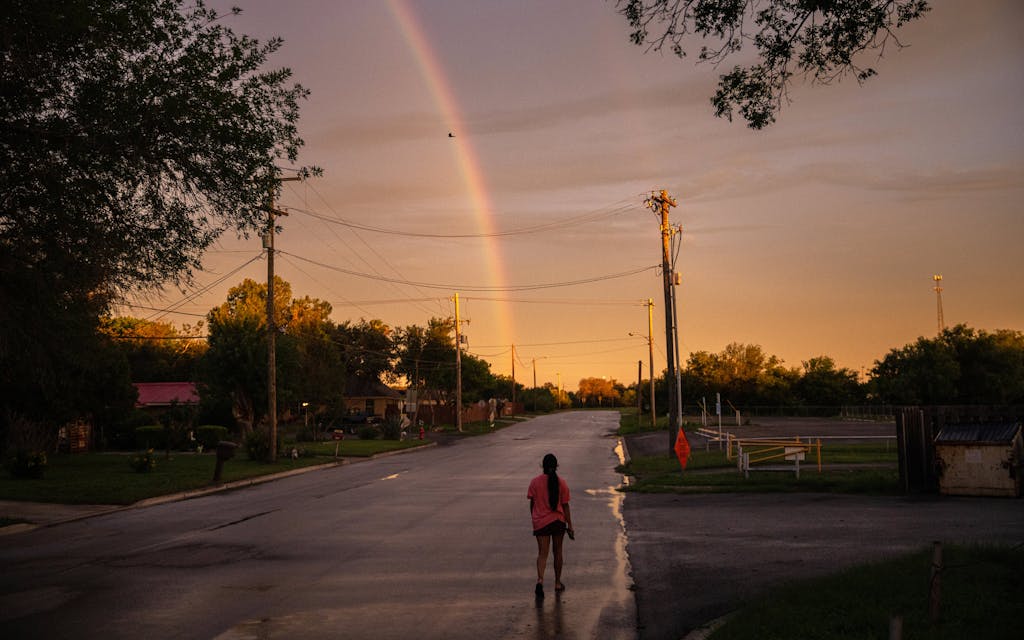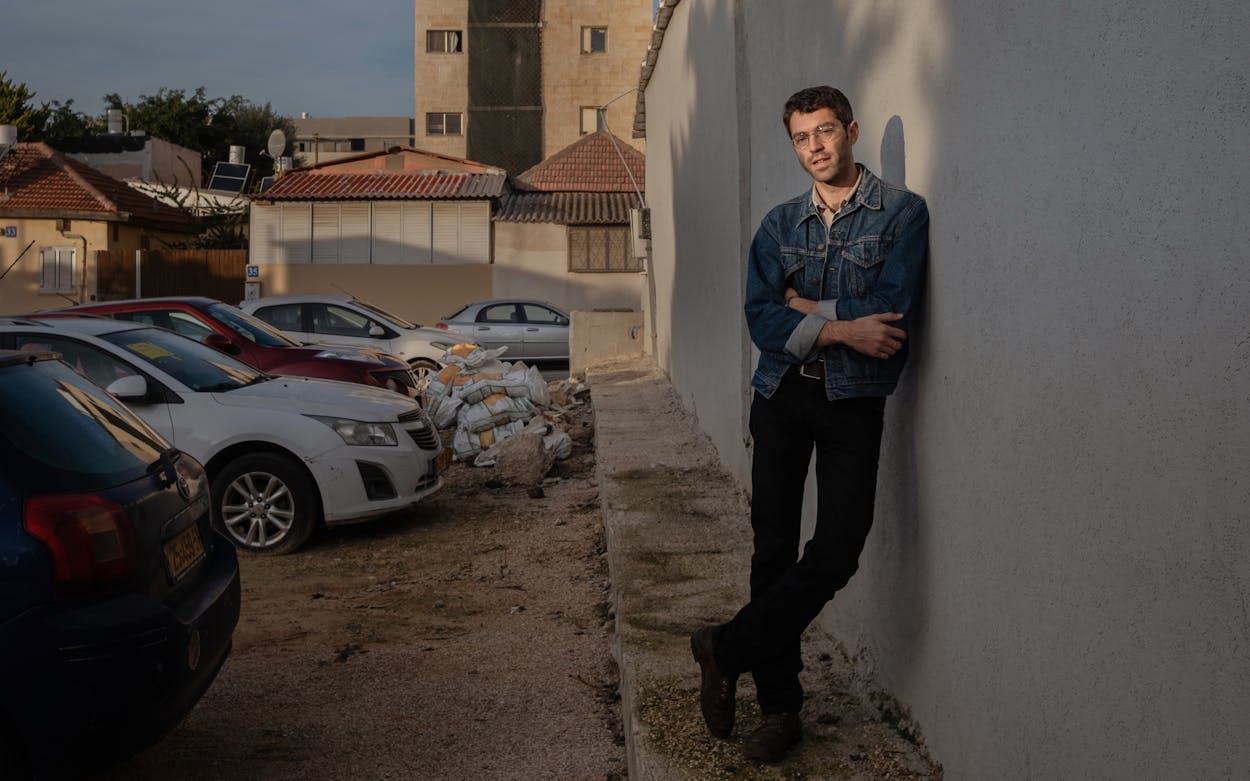WHO: Tamir Kalifa, a 34-year-old visual journalist based in Austin.
WHAT: Kalifa is one of two winners of the 2024 American Mosaic Journalism Prize, recognizing excellence in longform, narrative, or deep reporting about underrepresented or misrepresented groups in the United States, complete with a $100,000 cash grant.
WHY IT’S SO GREAT: Most Texans will remember where they were as news of the shooting at Robb Elementary School, in Uvalde, began to break on May 24, 2022. Photojournalist Tamir Kalifa was working in a coffee shop in Austin, thinking, as many Texans were, Not again. “I didn’t want to go,” he tells me via phone. “I thought I could never cover a mass shooting again.”
Kalifa had spent three months in El Paso in 2019 documenting the healing journey of Luis Calvillo, who was injured in the shooting at a local Walmart in which 23 people, including Calvillo’s father, were killed. Kalifa and his reporting partner were there when Calvillo walked out of the hospital and returned to coach his daughter’s soccer team for the first time, 56 days after the massacre. He knew up close the devastation an AR-15–style weapon wreaks on a human body. And the circumstances of Uvalde—the ages of the victims, the failures of the police response—compounded the horror.
A few hours later, though, he found himself heading down Interstate 35, arriving in the South Texas town before sunrise on May 25. “In that moment,” Kalifa says, “I thought, ‘I have this experience and this understanding, so it might as well be me.’ ” He collected himself and started driving, with no idea that it would be one of hundreds of drives to South Texas that he would make over the course of the following year. Kalifa ultimately spent 150 days photographing in Uvalde and, he says, pretty much every day thinking about it. “I remember when I left El Paso, I still felt there was so much more to do, that this experience was just beginning for this family,” he says. “I felt a sort of guilt leaving. I wanted to do in Uvalde what I wasn’t able to do in El Paso.” The result was a compendium of images that starkly illustrates a year in the anguish, solidarity, and mobilization of that community.

This week, Kalifa is one of two journalists being honored with the American Mosaic Journalism Prize, which aims to celebrate journalism’s ability to foster understanding and is intended to support freelance reporters. And though Kalifa’s oeuvre is striking in its diversity—for such outlets as the New York Times, the Washington Post, and Texas Monthly, he’s photographed subjects ranging from wildfires in Hawaii to national political campaigns to the Israel-Hamas War—the prize specifically recognizes the depth of his commitment to covering Uvalde and gun violence in the Lone Star State.
Kalifa was able to embed with the families of the children killed and injured at Robb Elementary, capturing them not only at their increasingly public demonstrations at marches and vigils and school board meetings from Texas to Washington, but also in their most intimate spaces: in the bedrooms of their loved ones, at family barbecues, shopping at H-E-B for flowers and balloons to mark a holiday at graveside. The journey began with the family of Jackie Cazares, a nine-year-old victim of the shooting, which Kalifa met at a rally at the Texas Capitol on the day after Jackie would have turned ten. The next day, he visited Jackie’s grave with her parents, who began to introduce him to other grieving Uvaldeans. His approach to this access was cautious: “I felt I had to build this cathedral of trust with the community,” he says, “which required sitting with the families without my camera out, getting to know them and letting them get to know me.” In the end, he says, “I allowed myself to care deeply for them and love them and be loved in return, which was never really a journalistic impulse but, I came to understand, was in service of journalism. It allowed for these families to trust me in visualizing their stories in ways that were respectful and dignified but also honest.”

Kalifa’s assignments for Texas Monthly have included photographing bats at a prison in Huntsville, documenting a journey by train through West Texas, and, of course, contributing to a profile on Kimberly Mata-Rubio, who lost her daughter Lexi at Robb Elementary. “The way that Tamir fully throws himself into his work is one of a kind,” Texas Monthly assistant photo editor Kayla Miracle says. “There’s such a seriousness to his work, but he can also get playful moments, the whole human experience. His attention to detail is unmatched.”
Now on assignment in Tel Aviv documenting the Israel-Hamas conflict, Kalifa is reminded often of a philosophy Mata-Rubio shared with him, which now motivates much of his work: “She said, ‘The key ingredient is that you need to be imagining it. If you can’t picture it, that it could be your child, you’re never going to step up.’ ” He keeps in touch with his loved ones in Uvalde, who have checked in on him regularly since the war began. He feels humbled by the recognition for his work and says he’s “struggling to process” the prize. He hopes it inspires other journalists to pursue work that is caring and compassionate—work that helps the public understand and process trauma and tragedy in a way that does not force them to look away.
- More About:
- Best Thing in Texas
- Art








